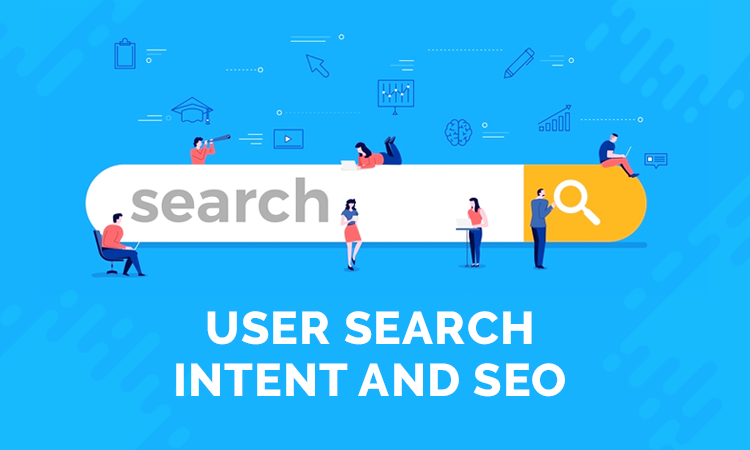Why User Intent is Critical to Effective SEO?
An inevitable outcome of the fast-paced 21st century is that any working-class member rarely has time to physically search for products/services.
As a result, most people turn to internet search engines whenever they come across a product or service that piques their interest.
Search engine queries typically encompass both broad and niche-specific product/service categories, including:
-
- Clothing Items and Accessories, e.g., shoes, dresses, pants, socks, suits, ties, caps, belts, scarfs, etc.
- Household Appliances, e.g., refrigerators, microwave ovens, TVs, vacuum cleaners, air purifiers, air conditioning units, HI-FI stereo systems, etc.
- Office Equipment and Supplies, e.g., chairs, desks, water dispensers, wifi routers, printers, printing paper, staplers, printer cartridges, etc.
- Health and wellbeing-related Services/Products, e.g., dental clinics, physiotherapy centers, chiropractors, pediatric care, gym equipment, etc.
- Business-related Services/Products, e.g., accounting/auditing, IT, legal services, waste management, cleaning, raw material suppliers, wholesalers, distributors, etc.
- Residential/Commercial Property Services/Products, e.g., landscaping, garbage collection, domestic cleaning, interior design, building fixtures, etc.
- Recreational/Sports-related Services/Products, e.g., uniform kits, sports equipment, personal trainers, hiking equipment, etc.
- Lifestyle-related Products/Services, e.g., barbershops, hair salons, beauty spas, vacation packages, resorts, hotels, restaurants, airport booking, etc.
Therefore, businesses need to learn how search engines process search queries to avail search results that adequately match specific user needs, i.e., search results relevant to User Intent.
Knowing the User Intent of user queries related to your product/service niche allows you to realize a high sales conversion rate from your SEO strategy.
The SEO-User Intent Relationship
The significance of User Intent in SEO lies in the fact that you can optimize your website’s ranking for diverse user search queries.
Achieving this objective involves incorporating two aspects of user intent in your comprehensive SEO strategy, namely:
Semantic Meaning
This is the implied meaning as derived from how users combine different keywords in search engine queries.
For example, one user can type ‘best electric car’ as their search engine query while a second user searches for ‘best car electric’ on the same search engine.
While these two search query phrases feature the same keywords, they do not have the same semantic/implied meaning.
The first phrase, ‘best electric car’, implies that the user is not only looking for the best car but is searching for an exclusively electric vehicle.
On the other hand, the second phrase ‘best car electric’ implies the user is primarily interested in finding the best car, using an electric drivetrain as a secondary consideration.
A consequence of this semantic difference is that the search engine generates different search results for the two apparently similar user queries.
More importantly, some results featured in the first search query are bound to appear in the array of results obtained for the second query, and vice versa.
Consequently, your website’s SEO content should incorporate multiple keyword combinations to ensure that you rank for numerous semantic meanings in user search queries.
Context
This user intent aspect refers to how you place keywords/keyword phrases within SEO content on your website.
Context is vital to SEO as it allows search engines to determine the precise meaning of the keywords/keyword phrases used on a website.
Consider the context of ‘rechargeable batteries‘ in the sentences below from two theoretical web pages:
- Despite advances in rechargeable batteries, electric car pricing is still significantly higher than that of gasoline-powered models.
- Smartphones now use rechargeable batteries that feature ultra-fast charging capability.
The two web pages rank in a search engine query that features rechargeable batteries as a potential keyword phrase.
However, the keyword phrase’s context can disqualify either web page if the user query includes a third definitive term, i.e., a word that specifies the user’s intent.
A user query with ‘car rechargeable batteries’ as the search term virtually eliminates the second web page from search engine results.
This is because the keyword phrase’s context allows the search engine to accurately determine that the web page has information on smartphone recharge batteries.
On the other hand, a user query with ‘smartphone rechargeable batteries’ effectively eliminates the first web page from SERPs.
Similarly, the search engine relies on the keyword phrase’s context to precisely determine that the web page refers to rechargeable batteries in electric and hybrid cars.
Consequently, creating a niche-specific SEO blog that features diverse content on a particular topic is an effective way of ensuring that you rank for multiple context-based search queries.
Using the examples provided above as a reference, individual web pages on your SEO blog can feature articles on the different applications of rechargeable batteries, i.e., cars, smartphones, smart devices, toys, security gadgets, etc.
How Google Considers User Intent in SERPs Ranking
Tech-savvy business people know that Google search algorithms rank web pages based on various SEO-implementations on web pages, including On-page, Off-page, and Technical SEO.
Notably, Google’s use of User Intent to rank your web pages is predominantly centered on On-page SEO.
Google search algorithms typically focus on the two components of On-Page SEO, namely:
- Use of keyword/keyword phrases within the textual content of on individual web pages of your website.
- Use of keyword/keyword phrases in captions/descriptions for photo or video content embedded on a web page.
As explained in the previous context, Google evaluates your web content’s relevance based on the semantic and contextual meanings of the keyword/keyword phrases you’ve used.
However, even an ideal implementation of User Intent on your SEO web pages is only effective at boosting your website ranking when you fulfill two other equally important aspects of web page content.
First, you should only use Quality and Holistic content on your web pages, i.e., the textual and descriptive content should be fact-based and free from any grammatical errors.
Second, you should avoid keyword/keyword phrase stuffing on web pages as doing so lowers your site’s credibility.


